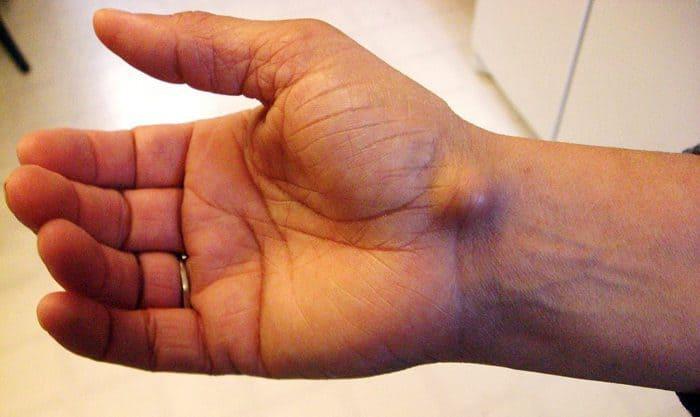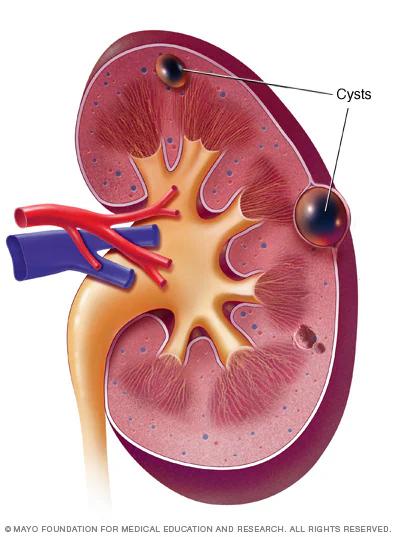Skin cysts are a common occurrence, often appearing as round lumps underneath the skin. These cysts are usually harmless and noncancerous and do not require treatment. However, if you notice an unexplained lump on your skin, it’s important to consult a healthcare professional. In this comprehensive guide, we will explore the causes, symptoms, and treatment options for skin cysts.
What are skin cysts?
Skin cysts, also known as epidermoid cysts or sebaceous cysts, are round lumps that develop just underneath the skin. These cysts often are fluid-filled sacs that can vary in size, ranging from smaller than a pea to several centimeters across. They grow slowly and are typically painless.
Skin cysts can form on various parts of the body, including the head, face, neck, chest, back, scrotum, and inside the vagina. They are enclosed within a sac-like structure, which consists of the epidermis, the outermost layer of the skin. The cysts may have a small, dark spot in the middle, and on occasion, they can get sore or red if they become infected.
Causes of skin cysts
The exact cause of skin cysts is not always known, but anyone can develop them. However, several factors may increase the likelihood of developing a skin cyst:
Family history
A family member with cysts, especially pilar cysts, can make you more susceptible to developing skin cysts.
Age and gender
Skin cysts are more common in adults, particularly in middle age. Additionally, they tend to occur more frequently in women.
Acne and skin conditions
Individuals with a history of acne or other skin conditions may be at a higher risk of developing skin cysts.
Rare conditions
Certain rare genetic conditions, such as Gardner syndrome, can predispose individuals to the development of skin cysts.
It’s important to note that skin cysts are not cancerous, and they cannot be transmitted from one person to another.
Types of skin cysts
There are different types of cysts, each originating from different locations and having distinct characteristics:
Epidermoid cyst
An epidermoid cyst, also known as a sebaceous cyst, develops in the top layer of the skin (epidermis) and occurs when something blocks hair follicles, and skin cells build up beneath this blockage. These cysts contain keratin, a protein secreted by the epidermal cells, they are often accompanied by a small dark spot in the center.
Pilar cyst
Pilar cysts, also called sebaceous cysts, form in hair follicles, usually on the scalp. They often form within sebaceous glands, which are part of your skin and hair follicles. They are filled with keratin and tend to be smooth and firm.
Pilonidal cyst
Pilonidal cysts form in the skin near the tailbone or lower back, they sometimes contain ingrown hair.
Ganglion cyst
Ganglion cysts are fluid-filled swellings that occur in joints or tendons, commonly affecting the wrists, hands, and fingers.
Baker’s cyst
A Baker’s cyst is a fluid-filled lump that develops on the back of the knee. It can cause discomfort and restrict movement.
Bartholin’s cyst
Bartholin’s cysts are small lumps or swellings that form just inside the opening of the vagina. They occur when the Bartholin’s glands, which are responsible for lubricating the vagina, become blocked.
Meibomian cyst or chalazion
Meibomian cysts, also known as chalazia, are small, painless lumps that develop on the eyelid. They occur when the Meibomian glands, which produce oil to lubricate the eyes, become blocked.
Identifying the specific type of skin cyst is essential to determine the most appropriate treatment approach.
Symptoms of skin cysts
Skin cysts typically present with the following symptoms:
Round lumps
Skin cysts appear as round lumps just beneath the skin’s surface. These lumps can vary in size, ranging from small to several centimeters in diameter.
Fluid or pus
Most skin cysts contain fluid or pus. When the cysts become infected, they can appear red and may be accompanied by pain or tenderness.
Dark spot
Some skin cysts may have a small, dark spot in the middle, which is the result of an ingrown hair, blocked hair follicle or oil gland.
Growth and variations in size
Skin cysts tend to grow slowly over time and can vary in size. They can start smaller than a pea and gradually increase in size.
Inflammation and redness
If a skin cyst becomes infected, it can become sore, red, and swollen. However, it’s important to note that redness may be harder to detect in individuals with darker skin tones.
It’s crucial to monitor any changes in the size, shape, or appearance of a skin cyst and seek medical attention if necessary.
Diagnosis of skin cysts
To diagnose a skin cyst, a healthcare professional will typically perform a physical examination of the affected area. They may ask questions about the cyst’s characteristics, such as its size, color, and any associated symptoms. In some cases, a doctor may recommend additional tests, such as:
Ultrasound
An ultrasound scan is an imaging test that can help determine the cyst’s size, location, and whether it contains fluid or solid material.
Biopsy
In rare cases where the doctor suspects the cyst may be cancerous, a biopsy may be performed. During a biopsy, a small sample of tissue is removed and sent to a laboratory for analysis. The diagnosis of a skin cyst is usually straightforward, and further testing is often unnecessary.
Treatment options for skin cysts
In most cases, skin cysts do not require treatment and can be left alone if they are not causing any discomfort or cosmetic concerns. However, treatment may be recommended under the following circumstances:
Infected cysts
If a skin cyst becomes infected, treatment may involve the use of antibiotics to eradicate the infection.
Large or painful cysts
Skin cysts that are large, painful, or interfere with daily activities may be removed. The removal procedure can be performed by a healthcare professional and may include:
- Incision and drainage: The cyst is opened and drained of its contents
- Excision: Cyst removal including its sac, is surgically removed
- Laser ablation: A laser is used to destroy the cyst
The specific treatment approach will depend on the cyst’s size, location, and individual circumstances. It’s important to consult a healthcare professional to determine the most suitable treatment option. They may suggest referral to dermatology to see a dermatologist in some cases.
Home remedies for skin cysts
While medical treatment is often necessary for skin cysts, some home remedies may help alleviate symptoms and promote healing. It’s important to note that these remedies should be used in conjunction with medical advice and not as a substitute for professional treatment. Some home remedies that may provide relief include:
Warm compress
Applying a warm compress to the affected area can help reduce swelling and promote drainage of the cyst.
Proper hygiene
Maintaining good hygiene by keeping the affected area clean and dry can help prevent infection and promote healing.
Over-the-counter pain relief
Over-the-counter pain relievers, such as acetaminophen or ibuprofen, may help alleviate any discomfort associated with the cyst.
Do not squeeze
Avoid squeezing or attempting to pop the cyst, as this can lead to infection or further complications. It’s important to consult a healthcare professional before attempting any home remedies to ensure they are safe and appropriate for your specific situation.
Prevention of skin cysts
While it may not be possible to prevent all skin cysts, there are some measures you can take to reduce the risk of developing them:
Avoid skin trauma
Minimize the risk of skin trauma by protecting your skin from injuries, cuts, or irritations.
Good hygiene
Maintain good hygiene practices, including regular washing of the skin and proper cleansing of any wounds or cuts.
Avoid squeezing or picking
Avoid squeezing or picking at your skin, as this can lead to the development of cysts or exacerbate existing ones.
Manage acne
If you have acne-prone skin, follow a proper skincare routine and seek treatment for acne to minimize the risk of developing cysts. By adopting these preventive measures, you can reduce the likelihood of developing skin cysts.
When to see a doctor
While most skin cysts are harmless, there are instances when it is important to seek medical attention. Consult your healthcare provider if:
Unexplained lump
You notice a lump on your skin and are unsure of its cause or nature.
Infected cyst
The cyst becomes sore, red, or swollen, indicating an infection.
Constant irritation
The cyst is in a location that is constantly irritated or causes discomfort.
Cosmetic concerns
The cyst bothers you for cosmetic reasons, particularly if it is on a visible part of your body. A doctor can evaluate the cyst, provide a proper diagnosis, and recommend appropriate treatment options.
Complications of skin cysts
Skin cysts are generally benign and do not pose significant health risks. However, in some cases, complications can arise, including:
Inflammation
An inflamed cyst can be challenging to remove surgically. In such cases, a doctor may postpone removal until the inflammation subsides.
Rupture
If a cyst ruptures, it can lead to infection and may require immediate medical attention.
Abscess formation
Cysts can become infected, leading to the formation of an abscess, which may require drainage and antibiotic treatment.
Skin cancer
Although extremely rare, there have been reported cases of skin cysts transforming into skin cancer. Regular monitoring and medical evaluation are essential to detect any potential malignancy. It’s important to address any complications promptly to prevent further health issues.
Conclusion
Skin cysts are common benign lumps that can appear on various parts of the body. While they are generally harmless and do not require treatment, it is important to monitor any changes in size, appearance, or symptoms. In some cases, medical intervention may be necessary, particularly if the cyst becomes infected, painful, or interferes with daily activities. By understanding the causes, symptoms, and treatment options for skin cysts, you can make informed decisions about your healthcare. Remember to consult a healthcare professional for accurate health information on diagnosis and treatment.
Sources
- Ovarian cysts – Symptoms and causes – Mayo Clinic
- Epidermoid cysts – Symptoms and causes – Mayo Clinic
- Skin cyst – NHS
Medical Disclaimer
NowPatient has taken all reasonable steps to ensure that all material is factually accurate, complete, and current. However, the knowledge and experience of a qualified healthcare professional should always be sought after instead of using the information on this page. Before taking any drug, you should always speak to your doctor or another qualified healthcare provider.
The information provided here about medications is subject to change and is not meant to include all uses, precautions, warnings, directions, drug interactions, allergic reactions, or negative effects. The absence of warnings or other information for a particular medication does not imply that the medication or medication combination is appropriate for all patients or for all possible purposes.
Related Articles
Are skin cysts contagious?
No, skin cysts are not contagious and cannot be transmitted from one person to another.
Can I pop a skin cyst at home?
It is strongly advised against attempting to pop or squeeze a skin cyst at home. This can lead to infection or further complications. Consult a healthcare professional for appropriate treatment options.
Can skin cysts come back after removal?
While removal of a skin cyst may be successful, there is a possibility of new cysts developing in the future. Regular monitoring and follow-up with a healthcare professional are recommended.
Can I prevent skin cysts?
While it may not be possible to prevent all skin cysts, practicing good hygiene, avoiding skin trauma, and managing conditions such as acne can help reduce the risk of developing cysts.







